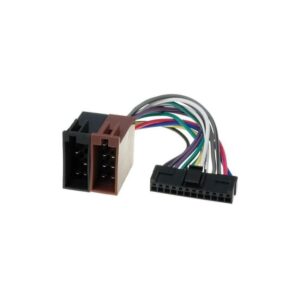Best Tips for Maintaining Your Traditional Clothes
Traditional clothes are not just a form of fashion; it has a cultural and emotional meaning tied up with history....

Traditional clothes are not just a form of fashion; it has a cultural and emotional meaning tied up with history. Each of them has its tale to tell, a treasured family heirloom that has been passed down from generation to generation, or a splendid dress bought for some milestone event. Beautifully designed and crafted, timeless salwar kameez needs very careful attention and thoughtful care. Proper maintenance of the garment helps keep it beautiful, in shape, and significant for many years.
Without proper care, delicate fabric and embellishments can lose all their charm in very little time. By adopting methods that may be called simple but mindful, we can safeguard the vivacity of colours, fine embroidery, and textures with which traditional clothes are filled. It is not only preserving but paying homage as well to the traditions and memories held in each piece of clothing. Let’s find out how to keep your favourite ones- including perhaps your all-time favourite Salwar Kameez- looking brand new and carrying meaning for many generations to come.
Understand the Fabric First:
The fabric used in every traditional clothes sets it apart from others. Before you put away or wash the clothes, find out what kind of fabric they are made of. Each of silk, cotton, wool, and brocade should be treated differently. Knowing your clothes well keeps you from employing the wrong cleaning chemicals or methods that may cause damage.
Whereas others do better with gentle hand washing, some sensitive fabrics need dry cleaning. Knowledge of the material aids you in making the most effective decisions for its long-term maintenance.
Handle with Clean Hands:
Traditional clothes usually have fine needlework, beads, or little threads. Always check that your hands are clean and dry before contacting them. Your skin’s oils, grime, or moisture can, over time, cause the fabric to stain or become frayed.
Finishing your hair, make-up, and some other preparations before getting dressed is wise for events. By taking these tiny steps, you keep your clothes lively and whole, therefore preserving their appeal and durability.
Wash with Care:
Wearing traditional clothes calls for added care. Unless the label indicates it is safe, do not put them in a laundry machine. Many traditional clothes respond well to gentle hand washes with cool water and mild soap. Never vigorously scrub or wring the clothing.
Gently push the water out after rinsing rather than using a wringer. Professional dry cleaning services might be called for if your outfit features elaborate embroidery or delicate handwork. If you are unsure about any cleaning approach, first, always check a little hidden area of the fabric. Good laundry practices help your clothes stay fresh without losing their colour or form.
Store them Correctly:
Traditional clothes must be stored correctly to be maintained. Let the item thoroughly air out after wearing before putting it back. Moisture can result in bad odours and mould, so never fold or store clothes if they are only slightly wet. For heavier items meant to stop stretching, use padded hangers.
For more delicate objects, precisely folding and covering them in muslin fabric will do perfectly. Long-term storage should not have plastic covers since these retain humidity. You can also help keep bugs at bay by positioning usual moth repellents like cedar balls close. Proper storage techniques will enable your clothes to remain wonderful for many years to come.
Protect from Sunlight and Heat:
Delicate old materials have fierce adversaries in heat and sunlight. Bright light overexposure can weaken fibres, fade colours, and make clothes appear aged before their time. Store your garments in a cold, dark place always. Keep those under sun exposure from drying straight after cleaning.
Rather, let them dry in the shade several times until they are completely dry. Use a low heat setting and put a thin cloth below the iron and the fabric should you ever need to iron your clothing. Your clothes stay fresh and rich if you take great care to shield them from heat and light.
Mend Small Damages Immediately:
At first, little tears, loose threads, or absent decorations will not appear terrible. Still, small damages left unaddressed might become huge issues. Especially after use, frequently check your clothes. Repair any small problem you observe right away.
Small stitches can prevent a rip from becoming larger, and fixing a lost button or bead promptly saves time and energy down the line. Acting quickly stops damage from spreading and keeps your traditional clothes original beauty.
Rotate Usage and Avoid Over-Wearing:
Some favourite traditional clothes get used slightly too much, though they are usually set aside for mehndi ceremonies or any other formal events. Celebrating too many times without breaks might damage delicate fabric and adornments.
Rotating your clothes helps to give everyone plenty of time to rest and recover between wears. This approach helps to lower wear and grinding. It also helps you to value all the lovely clothes you have.
Conclusion:
Though they might need a little more attention, the benefits of keeping traditional clothes are certainly worth it. These garments are sometimes even your culture’s history and part of your narrative and family legacy. Knowledge of the material, handling it too carefully, careful washing, and appropriate storage will keep your clothes beautiful for many years.






